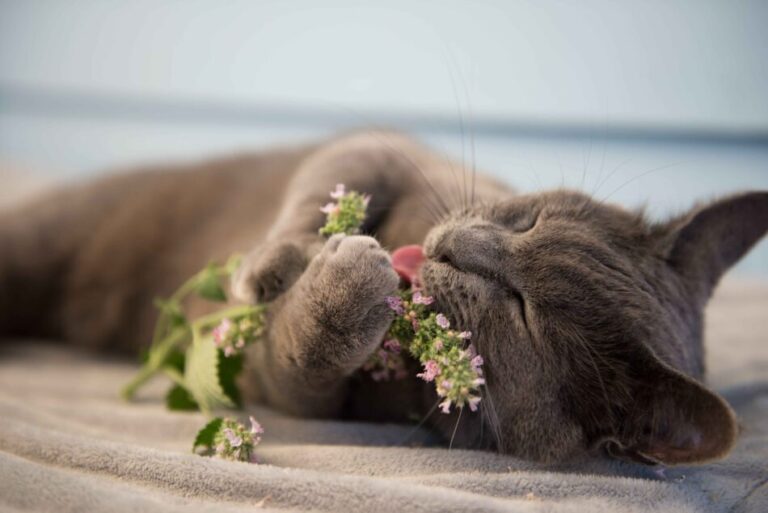Catnip, also known as Nepeta cataria, is a perennial herb that belongs to the mint family. It is native to Europe and Asia but is now widely cultivated around the world. What makes catnip so fascinating to cats is its chemical composition. This herb contains a compound called nepetalactone, which is responsible for the unique effects it has on our feline friends.
Nepetalactone is found in the leaves and stems of the catnip plant. When cats come into contact with this compound, it triggers a series of reactions that can vary from one cat to another. Some cats may roll around in the catnip, rub their faces against it, or exhibit increased playfulness. Others may simply become more relaxed and content.
The reason why cats are so attracted to catnip lies in their genetics. It is believed that the response to catnip is inherited, with about 50-75% of cats being sensitive to its effects. The reaction to catnip is thought to be a result of the compound stimulating certain receptors in the cat’s brain, leading to a pleasurable and euphoric sensation.
It’s important to note that not all cats are affected by catnip. Kittens under the age of 3-6 months usually do not show any response to catnip, and some cats may simply not have the genetic predisposition to be affected by it. Additionally, the effects of catnip typically last for about 10-15 minutes before wearing off.
So, the next time you see your feline friend rolling around in a pile of catnip, remember that it’s the nepetalactone in the herb that is causing this delightful and entertaining behavior. Catnip truly is a fascinating plant that brings joy to both cats and their human companions.
Chemical Composition

Nepetalactone is a volatile oil that is found in the leaves and stems of the catnip plant. It is released when cats come into contact with the plant, either by smelling or ingesting it. This compound acts as a stimulant, triggering a response in cats that can range from excitement to relaxation.
Interestingly, not all cats are affected by catnip in the same way. It is estimated that around 50-75% of cats have a genetic predisposition to be sensitive to nepetalactone. For those cats, the compound can induce a range of behaviors, such as rolling, rubbing, purring, and increased playfulness.
It’s important to note that the effects of catnip are temporary and typically last for about 10-15 minutes. After that, cats may become desensitized to the compound for a period of time before their sensitivity returns.
In conclusion, the chemical composition of catnip, particularly the presence of nepetalactone, is what makes it so intriguing to cats. Understanding this compound and its effects can help us better understand and enrich the lives of our feline companions.
Effects on Cats

One common reaction that cats have to catnip is rolling. They often roll around on the ground, seemingly in a state of pure bliss. This behavior is thought to be a result of the nepetalactone compound found in catnip, which stimulates the receptors in a cat’s brain and induces this rolling sensation.
In addition to rolling, cats may also engage in another peculiar behavior when exposed to catnip: rubbing. They often rub their bodies against the source of the catnip, whether it be a toy or a patch of the herb itself. This rubbing behavior is believed to be a way for cats to spread the scent of the catnip on their fur, further enhancing their enjoyment of the herb.
Furthermore, catnip can elicit increased playfulness in cats. After being exposed to catnip, many cats become more active and energetic, engaging in playful behaviors such as chasing imaginary prey or pouncing on toys with renewed enthusiasm. This heightened playfulness can provide both mental and physical stimulation for our feline companions.
In conclusion, catnip has a range of effects on cats, including rolling, rubbing, and increased playfulness. These reactions add an element of surprise and excitement to our cats’ lives, making catnip a popular and enjoyable herb for both feline and human companions alike.
